This is a reposted article originally written for Positive Feedback by our friend Rush Paul. The great team at Positive Feedback, as well as Rush himself, have kindly given us permission to repost this and you can find the original article at this link.
Thanks to Rush the PF team!
The labels represented in NativeDSD’s catalog continue to deliver outstanding performances in great sounding recordings. NativeDSD is just a stunning resource for those who love immaculate high resolution recordings made by some of the best recording engineers working today (Jared Sacks of Channel Classics, Brendon Heinst of TRPTK, Gonzalo Noqué of Eudora, Jake Purches of Base2, Bert van der Wolf of Northstar Recording, Daan van Aalst of Navis Classics, just to name a few). And the artists represented by these labels are just phenomenally good. It is a treasure trove of artistic talent that rivals and often exceeds the performance qualities of the better known labels with larger marketing budgets.
I wrote most recently about several Pure DSD256 recordings from Eudora, Yarlung and Hunnia (HERE) and the recently released Pure DSD256 recording from Channel Classics of Anna Fedorova’s impressive Intrigues of the Darkness (HERE). Today I have for you some outstanding recent releases from Cobra Records, TRPTK, APSoon, Sound Liaison, Linn, Outer Marker, Reference Recordings, Just Listen, and Channel Classics (once again)—all highly recommend.
-
 The Muses Restor’d€20,99 – €34,49
The Muses Restor’d€20,99 – €34,49
The Muses Restor’d, Rachel Podger with Brecon Baroque. Channel Classics 2024 (32bit DXD, DSD256)
Already recognized in the British music press as one of the best chamber music recordings of 2024, this is yet another sterling example of the artistry of Rachel Podger, “the Queen of the Baroque violin,” and her Brecon Baroque ensemble. I eagerly await each new recording she releases for two simple reasons: they will be musically superb and they will be exceptionally well recorded. Plus, I really enjoy music of the Baroque performed on period instruments.
And no one has been doing this better over the past two decades (and more) than Rachel Podger. The Brecon Baroque group that she founded is similarly outstanding, and all performing on period instruments or reproductions. But more than this, Rachel plays with emotional intelligence—never indulgent, but filled with feeling and the simple joy of making music. Her music making is infectious. And the lovely thing about her artistry is that she applies her technical brilliance in support of the music and the ensemble. She could be the prima donna, but she never seeks that role, never assumes that role. Instead, she is the consummate soulmate with her fellow musicians—never assuming the spotlight, but always supporting and enhancing the ensemble.
Traversing nearly a century of English and Scottish music from the 17th to early 18th centuries, this album is a scrumptious banquet of musical sounds, moods, and texture. The album opens firmly in the high-baroque style of George Frideric Handel’s (1685-1759) Sonata in D, but then transitions back in time to the surprisingly modern sound of William Lawes’ (1602-1645) Fantasia-Suite, John Blow’s (1649-1708) Ground in G Minor, and Matthew Locke’s (1621-1677) Little Consort in two parts for several friends. By the time the music making gets to Henry Purcell’s (1659-1695) Sonata in G Minor, we are firmly within the aesthetic popular English chamber music of the 17th century. And such a rich and delightfully varied musical landscape this is!
This music is certainly “led” by the violin, but it is enriched by the timbre of various combinations of theorbo, archlute, guitar, harpsichord, organ, bass viol, baroque cello, and lute. For the listener who simply luxuriates in sonic textures, this album is a pure delight. For the music historian, it is a masters class in the history of English chamber music. For the simple music lover, it is pure magic.
And once again we are treated to the technical magic of recording/mastering engineer Jared Sacks. Recording in The Church of St. John the Evangelist, Upper Norwood, London, these instruments are beautifully captured in this very natural sounding acoustic space. Detail is abundant, but not at the expense of air and reverberation. It is the epitome of the enveloping sonic landscape Jared so frequently captures in his excellent recordings. (For more about Jared’s recording philosophy, see my earlier conversation with him, HERE.) The musical partnership Jared and Rachel have shared over the years once again delivers a marvelous gift to us as listeners.
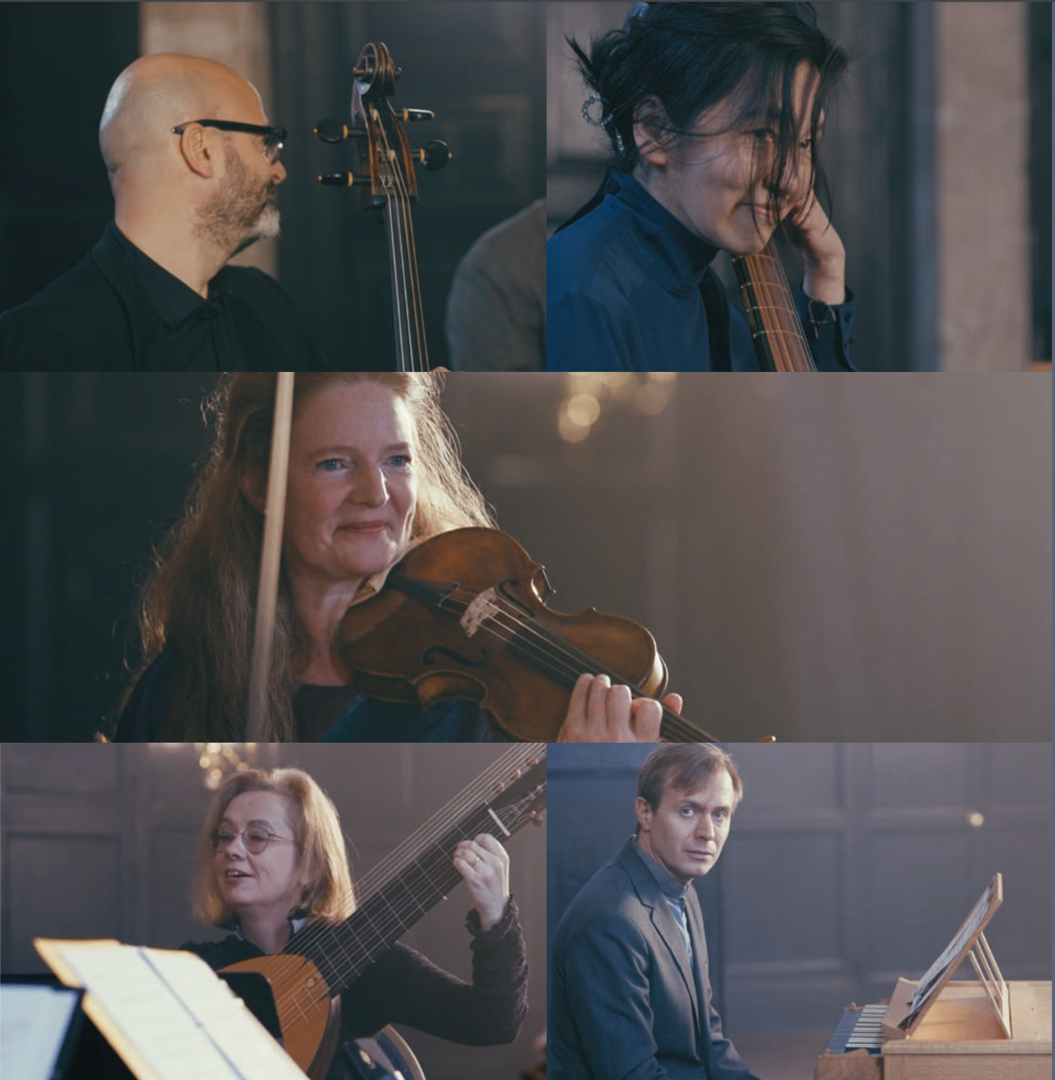
-
 Rzewski: The People United Will Never Be Defeated! (Live)€20,99 – €34,49
Rzewski: The People United Will Never Be Defeated! (Live)€20,99 – €34,49
Frederic Rzewski’s The People United Will Never Be Defeated! (Live), Hanna Shybayeva piano. TRPTK 2024 (32bit DXD or DSD256)
This recording of the People United Will Never Be Defeated! is dedicated to all people all over the world who are fighting for their fundamental rights: people who stand up and protest against dictatorship and injustice, against violence and abuse of power. It was recorded live at the soundsofmusic festival, Lutheran Church, Groningen (NL), by Byelorussian pianist Hanna Shybayeva.
Composed in 1975 by American pianist/composer Frederic Rzewski (1938-2021), this work turned out to be his most successful piece. A piano solo of just over an hour, it includes all music the composer could imagine and had internalized. It is a grand stylistic synthesis, a postmodernism traversal of diverse musical concepts and ideas. Rzewski’s compositions illustrate the desire for contemporary music with greater accessibility, comprehensible for working class people. He applied minimalist techniques before the term minimal music was coined. A virtuosic pianist himself, Rzewski was described by music publicist Nicolas Slonimsky as “a granitically overpowering piano technician, capable of depositing huge boulders of sonoristic materials across the keyboard without actually wrecking the instrument.” This composition as performed by Hanna Shybayeva gives one a clear sense of the experience Slonimsky must be referencing.
“Music probably can’t change the world.” Rzewski wrote. “But it is a good idea to act as if it could.” And it is this sensibility that attracted Shybayeva to perform this work, writing “The emotional and technical richness of the piece allows me to express pretty much everything I felt and continue to feel about the events in Belarus in 2020 and today… The immense variety and sometimes sudden changes of musical styles, the complex and versatile emotional world of the cycle calls for a straight connection with our human nature and mirrors the struggles we all go through during our lifetime. All of this makes this music accessible to any ear and even bewitches the unexperienced listener. Remaining complex, but also unexpectedly simple at times, Rzewski’s music reaches his goal to be understood by everyone, speaking directly to our hearts.”
And speak to us this music, and Shybayeva’s performance, does indeed. It is a pianistically demanding work. But it is a work that also demands compassion and interpretive heart to deliver successfully. Hanna Shybayeva does so brilliantly. She makes this a deeply affecting, emotional experience. What a wonderful hour spent in the presence of a great composer who is so effectively communicated.
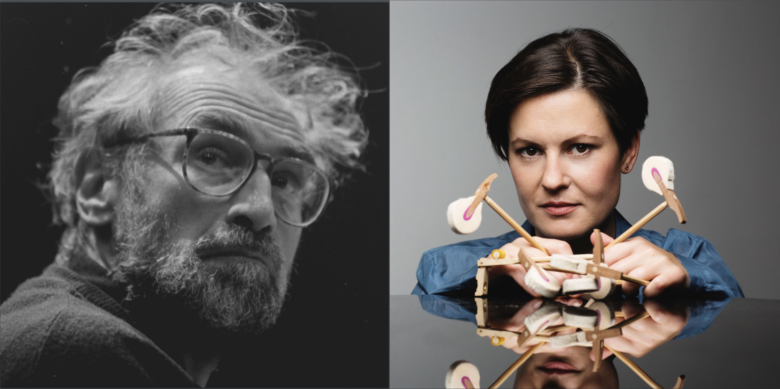
-
 Into the Light€19,99 – €34,49
Into the Light€19,99 – €34,49
…Into the Light, Sasha Witteveen, double bass. TRPTK 2024 (32bit DXD, DSD256)
This album by double bassist Sasha Witteveen is a journey—a journey from the darkness into the light. Sasha quotes Martin Luther King in her liner notes: “Darkness cannot drive out darkness; only light can do that. Hate cannot drive out hate; only love can do that.” And thus we have the theme around which the music in this recital has been selected.
The album opens with the sonata for double bass and piano by Russian-British composer Dmitri Smirnov, …Into the Light, composed in 2018. The sonata commences with a deep and atmospheric sound, developing into a chaos in the low register, and ending with high flageolets like angels singing in heaven. And this 12-minute work gives the album its title.
From this introduction, the album moves to a work by contemporary American composer Xavier Dubois Foley, The Falling Seagull, composed for double bass and influenced of the erhu, a Chinese string instrument. Then to Rachmaninoff’s Elegy, Op. 3 No. 1, originally written for piano in 1892. And then to a series of Seven Double Bass Duets written by American composer and double bassist David Anderson (b.1962), each of which tells a different humorously playful story. The recital closes with Bottesini’s Variations on Nel Cor Più Non Mi Sento based on an aria from the opera La Molinara by Paisiello. “The aria sings cheerfully and with humor about a broken heart and desperate love, because love is something we have to celebrate!” concludes Sasha’s notes.
Sasha Witteveen (2003) grew up in a musical family and started playing the piano at the age of five under guidance of her mother. She started with the double bass at the age of ten, being fascinated by the instrument after seeing it in the film Some Like It Hot, and graduated with the highest possible grade at the Conservatory of Amsterdam. Her playing is deeply personal, emotionally intense, technically brilliant. I hope Brendon Heinst and Maya Fridman at TRPTK will be able to entice her to another recording project. I would love to hear more from her.
The sound quality of this album is quintessentially TRPTK excellence—what we have come to look forward to with each new TRPTK release. Brendon Heinst is the recording and mastering genius at TRPTK. Maya Fridman is the guiding spirit for artist talent and musical content for TRPTK, and she an extremely talented cellist with many released albums in her own right. Together, they have built one of the most innovative recording labels bringing us music of high excellence today. I wrote about Brendon’s work with TRPTK as things stood back in 2020 (HERE) and below you will find a link to a more recent interview by David Hopkins of NativeDSD. David’s article is well worth reading to learn more about their current philosophy as they continue building TRPTK.
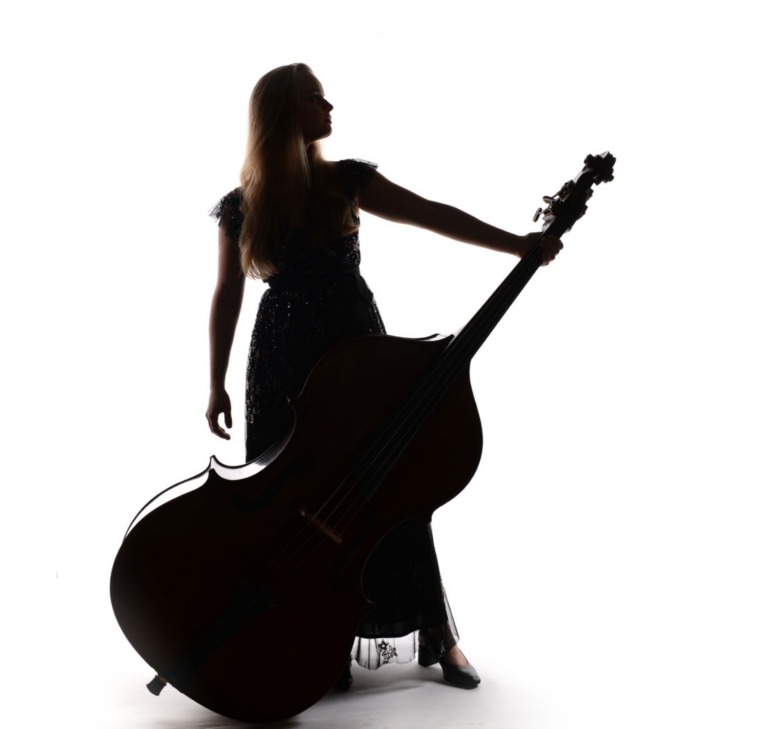
-
![Viriditas [Visual Video Album]](data:image/svg+xml,%3Csvg%20xmlns='http://www.w3.org/2000/svg'%20viewBox='0%200%20300%20300'%3E%3C/svg%3E) Viriditas [Visual Video Album]€29,95 – €39,95
Viriditas [Visual Video Album]€29,95 – €39,95 -
 Viriditas€20,99 – €34,49
Viriditas€20,99 – €34,49
Viriditas, Sibil•la Ensemble. TRPTK 2024 (32bit DXD, DSD256)
This is a captivating album of hauntingly ethereal, mystical music. Opening with Hildegard von Bingen’s “O virtus Sapientiae” the album pursues as its theme the mystical concept of Viriditas which originates from the theological writings of the German Benedictine abbess, composer, philosopher, mystic, and polymath Hildegard von Bingen. In Hildegard’s writings, Viriditas symbolizes the vibrant, life-giving energy that permeates the natural world and the essence of greenness and flora. This divine force, both physical and spiritual, was believed to be experienced in moments of ecstatic connection, where the boundaries between humanity and nature blur.
The album contains a collection of 12th and 13th-century chants and secular songs from Germany, Spain, France and Cyprus centered around this concept of Viriditas. Each is a tribute to the generative power of nature that the Sybils, those the female prophetesses who have captivated the human imagination from ancient pagan times, embodied. Revered across cultures for their divine insights and prophecies, they were seen as conduits between the mortal realm and the divine. And thus the source for the name of the Sibil-la Ensemble.
Whether one wishes to engage in the philosophical musings underlying the texts of these chants and songs, the music is pure medieval wonderfulness. Performed on voice and a host of instruments of the medieval period (Gothic harp, vielle, cittern, rebec, medieval lute, hurdy-gurdy, and percussion), the album is an aural delight constantly titillating ones aural senses.
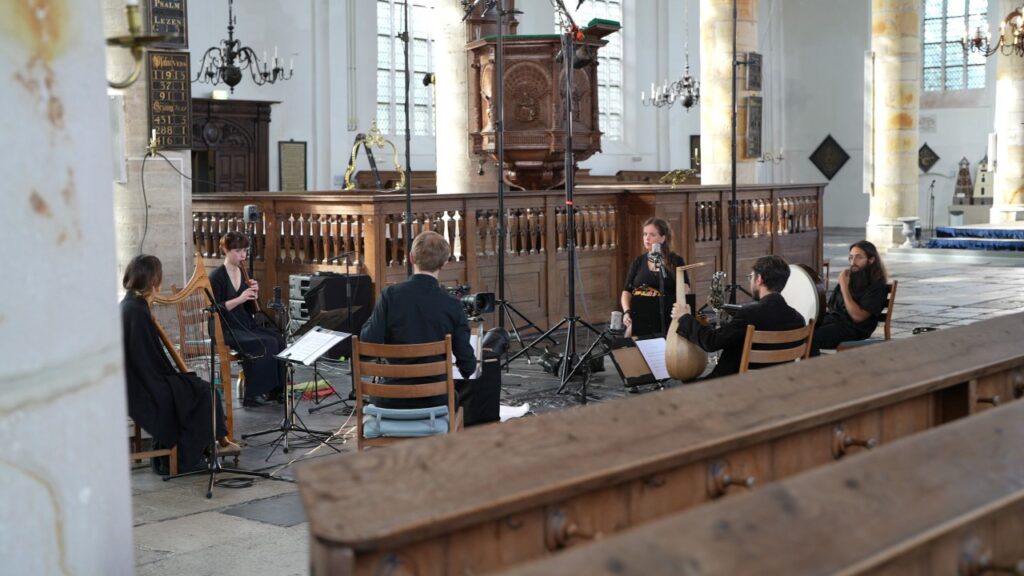
The vocal performances by Kristia Michael, artistic director of the ensemble, are top notch. Were you ever a fan of Lisa Gerrard with Dead Can Dance? Well, if so, you will have some sense of what you might expect. Kristia focuses on the experimental use of the voice and the spiritual elements of sound. Guido van Oorschot, de Volkskrant, says of her: “Kristia Michael is a vocal artist who navigates between piety and the raw Mediterranean. Subtle are the guttural arabesques with which she adorns the music.”
If you enjoy early music and the playing of instruments of that period, this is an album that should be a must buy on your list of future acquisitions. If you enjoy a bit of the mystical with your rebec, all the better!
Plus, the performances are gorgeously captured by TRPTK’s masterful recording engineer Brendon Heinst.
In addition to the music album release, there is additionally a visual album of Viriditas in 4K and HD Video (HERE). It is a very enjoyable visual journey with these musicians by videographer Jonas Sacks. Very well done! You can watch the trailer on YouTube:
For a “behind the scenes” look at how this album and video were made, don’t miss reading Brendon’s blog post, Behind the Scenes: Recording Viriditas.
I’ve reviewed many albums released by TRPTK. If you’ve enjoyed their recordings, or want to learn more, don’t miss this interview with Brendon and Maya, the principals at the label: “Meet the Magicians: Brendon Heinst and Maya Fridman of TRPTK,” by David Hopkins, NativeDSD (HERE).
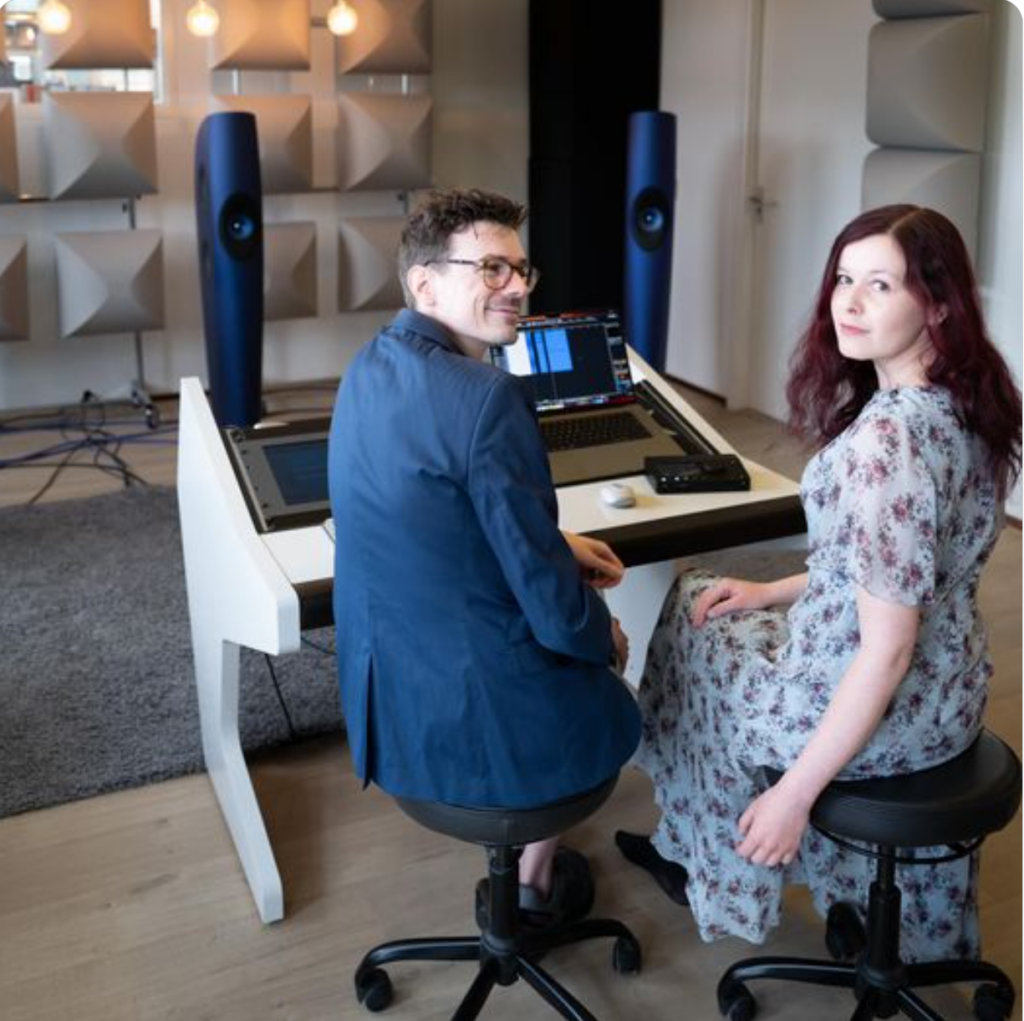
-
 Joseph Haydn: String Quartets Op. 74 – Folk Music from Scotland€16,99 – €29,99
Joseph Haydn: String Quartets Op. 74 – Folk Music from Scotland€16,99 – €29,99
Haydn String Quartets Op. 74, Folk Music from Scotland, Maxwell Quartet. Linn Records 2024 (96kHz, DSD64, DSD128).
This release includes a nice selection of works in excellent performances by the Maxwell Quartet. It is an intriguing juxtaposition of Haydn string quartets with traditional Scottish folk music once again forms the basis of the program. There is no logical connection between the three Haydn quartets of Op. 74 and three Scottish folk tunes that have been selected and arranged by the Maxwell Quartet. Haydn never made it to Scotland and there is no indication that his musical life was in any way impacted by Scottish folk music. But, the combination works! It creates an interesting, and excellent, recital program.
The Maxwell Quartet was founded in 2010 by friends who grew up playing classical and folk music together in youth orchestras and music schools across Scotland. The founding members lineup changed in 2014 with the addition of a new violinist and violist. This is the group we hear today, composed of Colin Scobie, violin 1st, George Smith, violin 2nd, Elliott Perks, viola, and Duncan Strachan, cello.
Based across the UK and touring regularly in Europe and the United States, the Quartet’s performances are set apart by the tribute they pay to their Scottish folk music heritage. From 2019 to 2021, the Quartet is Associate Artist at both the Royal Conservatoire of Scotland and the Music at Paxton festival.
And yet, and yet… This wonderful set of performances is limited by the original recording format of 96kHz/24-bits that Linn Records has stubbornly committed itself to using. According to Linn, there is no reason for higher resolution. Well, I disagree–vehemently. It is so saddening to me that this excellent music is hamstrung by sounding as if it is being playing inside a sock in the original 96kHz format. Fortunately, NativeDSD’s mastering engineer Tom Caulfield has applied his “Higher Rates Program” magic to remaster the original file from Linn to DSD128. This is not a full saving grace, but it helps immensely. Normally in my system I prefer to play the original edit master whenever possible and allow my Playback Designs MPD-8 DAC to handle conversions in the digital realm before outputting its analog signal. In this case, Tom’s remastering using the magic of Jussi Laako’s Signalyst HQ Player Pro algorithms accomplished the more listenable result.
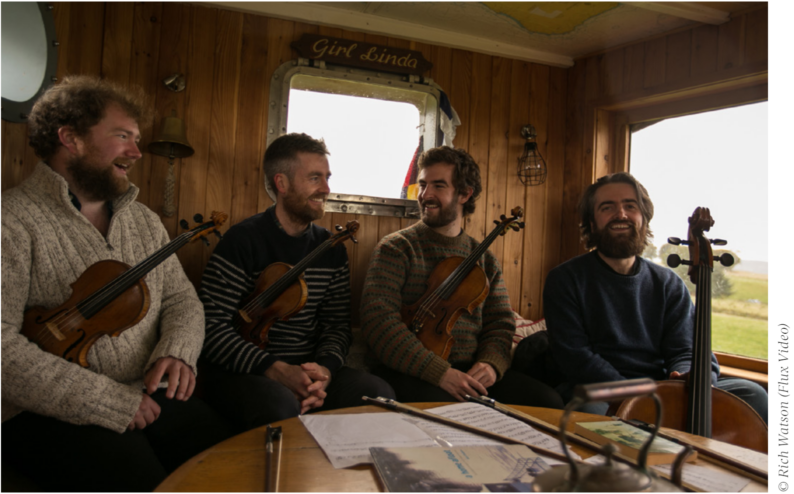
-
![Singing Bells Meditation [Pure DSD]](data:image/svg+xml,%3Csvg%20xmlns='http://www.w3.org/2000/svg'%20viewBox='0%200%20300%20300'%3E%3C/svg%3E) Singing Bells Meditation [Pure DSD]€15,99 – €35,99
Singing Bells Meditation [Pure DSD]€15,99 – €35,99
Singing Bells Meditation, a Tibetan Sound Healing Journey. Just Listen Records 2024 (Pure DSD256, stereo and binaural).
Performed by meditation and singing bell artist Leonie Schuurman (Body & Sound Sister), this is a one hour+ meditative escape. According to Schuurman, “Bells have a toning effect that offers therapeutic relief to the body such as muscle tension release, improved concentration and overall positivity as well as reducing stress, improving sleep quality, boosting immunity, or increasing creativity.”
For best effect, NativeDSD Founders Jared and Jonas Sacks recommend us to “lie down if possible using headphones (best with the Binaural version) or speakers. Start with some deep and calm breathing. Make sure you are comfortable. It is nice to maybe remind fellow housemates or family that you will be ‘offline’ for the next hour and ask them not to disturb you. If you are into scents or candles, this is the time to light them!”
I listened to the binaural files on headphones and it was, indeed, a completely immersive experience. Very nicely performed and beautifully recorded.
The binaural version was recorded with the Neumann KU 100 Dummy Head with Binaural Stereo Microphone, modified by Rens Heijnis, on loan from Tom Peeters whose binaural recordings on Cobra Records I’ve recommended numerous times. See a discussion with Tom of binaural recording HERE.
-
 Bruckner: Symphony No. 7 & Bates: Resurrexit€16,99 – €33,49
Bruckner: Symphony No. 7 & Bates: Resurrexit€16,99 – €33,49
Bruckner Symphony No. 7 and Mason Bates Resurrexit, Manfred Honeck, Pittsburgh Symphony Orchestra. Reference Recordings 2024 (32-bit DXD and DSD256). HERE
The Manfred Honeck recordings from Pittsburgh are getting better and better and better. These are recorded live in concert and one reason I’m finding them better and better is that the SoundMirror recording team (John Newton and Mark Donahue) are getting more proficient in capturing the sonics in Heinz Hall and doing so in front of live audiences over the course of three days of performances. They now have their recording process nailed down, and the sonic results are impressive. They are now recording in DXD using five omnidirectional DPA 4006 microphones as their main microphone array, with judicious spot miking to pull out detail where needed. The result is a superb sonic image of the orchestra: wide and deep, with a superb capture of inner detail, and tremendous dynamics. This team are simply masters of their craft.
This recording has received rave reviews elsewhere. I’m late to the game. But I add my concurrence. Honeck gives a masters class in performing the Bruckner 7th, it is just beautifully done. David A. McConnell writes in The Classic Review, “The Pittsburgh Symphony Orchestra’s playing is dazzling on all fronts, its sound as refined and resplendent as Vienna.” (HERE) David Allen writes in the New York Times, “If this Seventh is one of Honeck’s least interventionist readings, it is hardly less formidable than his Beethoven or his Tchaikovsky. Even more than in his terrifying account of the Bruckner’s Ninth, you get the sense that he holds the composer in awe.” (source) I’ll simply applaud their comments and say “+1.”
Mason Bates (b.1977) is the second composer presented on this album with his 2018 work Resurrexit. I’ve been a big fan of his compositions since I first heard two of his shorter works in a local chamber music recital in Richmond, Virginia, and then again with his more expansive work, Art of War, in its 2019 premier by the National Symphony Orchestra conducted by Gianandrea Noseda in Washington, DC. Resurrexit demonstrates his continuing maturation as a composer. It has color, energy, and that probing intellectual curiosity that I hear consistently in his works. Honeck and his Pittsburgh players perform it brilliantly.
-
![The Art of the Fugue: J.S. Bach on Two Harpsichords [Pure DSD]](data:image/svg+xml,%3Csvg%20xmlns='http://www.w3.org/2000/svg'%20viewBox='0%200%20300%20300'%3E%3C/svg%3E) The Art of the Fugue: J.S. Bach on Two Harpsichords [Pure DSD]€19,99 – €29,99
The Art of the Fugue: J.S. Bach on Two Harpsichords [Pure DSD]€19,99 – €29,99
J.S. Bach, The Art of the Fugue on two harpsichords, Gavin Black and George Hazelrigg. Outer Marker 2008 2024 (remastered from the original DSD128 recording files, Pure DSD128 and DSD256).
The work is performed on two harpsichords. In each movement, the musical lines are shared essentially equally between Gavin Black, playing a two-manual German style harpsichord by Philip Tyre, and George Hazelrigg, playing a two-manual German style harpsichord by Keith Hill.
In the four-voice pieces, for example, each player (and thus each instrument) takes two of the voices. The use of two large harpsichords makes available dozens of different sound combinations, and permits the movements of The Art of the Fugue to be brought to life in a colorful and vivid manner. (From the enclosed booklet.)
Music on harpsichord is among my numberless guilty pleasures. And these instruments are magnificent. If you think of harpsichord as annoying and abrasive (that is, if you’re in Sir Thomas Beecham’s camp who famously described the harpsichord as sounding like “two skeletons copulating on a tin roof”), I encourage you to listen to this recording and gain a new respect for the musical magic that is a large harpsichord well played.
When Bach died in in June of 1750, he left his great final work Die Kunst der Fuge unfinished. The final movement breaks off abruptly in the middle of a line—never to be completed. He did not explain what instrumentation he envisioned for this work, nor his intention for the order of the movements. Perhaps he never intended to specify, which was not uncommon in the period. Black and Hazelrigg’s decision to perform this on a pair of large two-manual harpsichords of the German tradition (both of modern construction) is very satisfying.
If you know The Art of the Fugue but have only heard it played on a single instrument, this two harpsichord performance may be an eye-opener for you. This rich complexity of sound that the two instrumentalists create as they each take on different voices makes for a very special journey down some otherwise familiar music.
Bonus Tracks 21 and 22 of Chromatic Fantasia and Fugue in D Minor, Movements 2 and 2, (recorded in DSD256 in 2021) is indeed a lovely bonus. I had to download the DSD256 version of the album to hear those newer Tracks 21 and 22 recordings in their DSD256 original form. And it is indeed a very special treat. The greater transparency that DSD256 delivers over DSD128 make this edition the preferred release for me.
Some of the great music of the European tradition, beautifully performed on superb instruments, and very nicely recorded. Recommended!
About the performers: Gavin Black is the Director of the Princeton Early Keyboard Center and an organist and harpsichordist best known for his recordings of seventeenth-century keyboard music. He has been a teacher of organ, harpsichord, clavichord and continuo-playing since 1979, teaching from time to time at Westminster Choir College and at the Westminster Conservatory of Music. He currently writes a monthly column on organ and harpsichord teaching for The Diapason.
George Hazelrigg performs with Hazelrigg Brothers, an instrumental trio that melds jazz, rock, and classical music. From age 8 to 15 George studied organ and harpsichord at Westminster Choir College under Mark Brombaugh and Gavin Black; at 16 he studied jazz piano with Grammy-nominated composer Laurie Altman. He also attended New York’s Center for Media Arts and later Manhattan School of Music, where he studied under Garry Dial. With his brother, Geoff, they are proprietors of Hazelrigg Industries, which manufactures and markets high-end audio gear for the D.W. Fearn company, in whose studio this album was recorded. They record in their home studio and do production and session work for artists in the rock and pop world.
-
 In Terra Aliena (In Foreign Territory)€16,99 – €35,99
In Terra Aliena (In Foreign Territory)€16,99 – €35,99
In Terra Aliena (in alien territory), Música Temprana. Cobra Records 2024 (binaural, stereo, multichannel, DXD, DSD256).
The baroque and early music group, Música Temprana, are consistently excellent. They are worth seeking out if you have any interest in music of this period played on period instruments. Started in 2001 by the Argentine-Dutch musician Adrián Rodríguez Van der Spoel, Música Temprana aims to highlight the Latin-American Baroque music repertoire. Most of Música Temprana’s repertoire comes from the archives, cathedrals and Jesuit missions of Latin America. Woven throughout the fabric of Música Temprana’s music and instruments is the rich cultural diversity of Latin America, with the threads of many Creole, Indian, African and European influences. Over their years of performance, they have built a rich recorded portfolio of interesting music. For other albums, see this listing.
This is their seventh album for Cobra Records. In this album, they come to the archives in Spain and Portugal to explore the expression “in terra aliena,” which occurs frequently in Spanish poetry after 1500. In 1492, Spain conquered the Nazaré dynasty of Granada, putting an end to the Muslim rule on the peninsula. In that same year, the Jews were driven out of Spain or forced to convert to Christianity. All this caused Muslims and Jews to flee to the north of Africa. Roman Catholics from Castile and Aragon left for America. Large numbers of seafarers and invaders were never to return to the peninsula. It is no wonder that poetry, and consequently song, of the era became imbued with this sense of longing for home and family from “in foreign territory.”
The poems collected in this album are about the themes of the exile: the letters, the moment of departure, being a captive in a foreign country and searching for a suitable place for a grave, to avoid the eternal suffering of the exile.
Somber stuff—reflected in achingly beautiful music and poetry. Beautifully performed, supremely well recorded.
Recorded in the Pieterskerk, Utrecht (The Netherlands), April 13 -16, 2024, we have a natural acoustic venue that complements and enhances the music, instruments and voices. Cobra Records owner and recording engineer, Tom Peeters, captures this superbly.
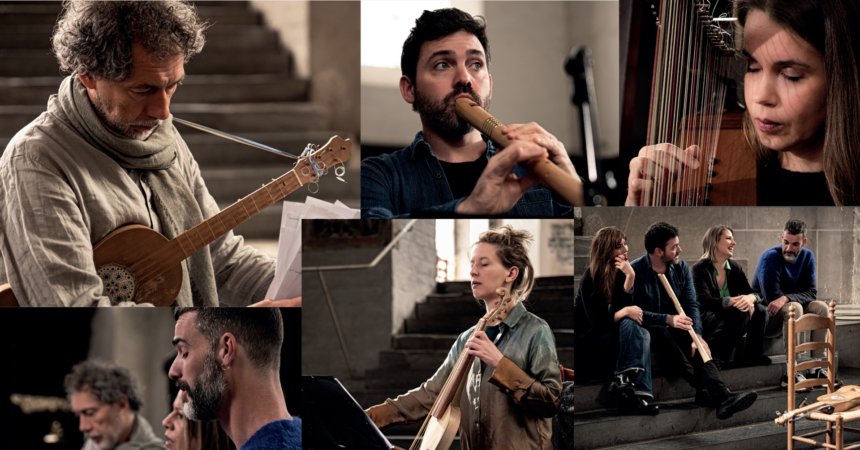
I’ve been listening to the binaural DSD256 recording of this album. The clarity and precision with which this binaural recording reflects these performances is uncanny. It’s addictive. If you listen on headphones, you really should hear these binaural files. Tom has outdone himself in both the binaural and stereo recordings of these wonderful musicians. I’m sure the multichannel version must be similarly entrancing. While recorded in DSD256, Tom tells me that he was unable to master the release without some PCM editing, so this is not a Pure DSD recording. Nonetheless, his results are quietly stunning in the transparency, the accuracy of timbre, and the organic sense of “realness” captured on the instruments and voices. Plus, when listening on headphones to the binaural version, I feel as though I could simply reach out and touch the performers in the space around me. I find it all utterly transportive. Find a darkened room and a quiet time to be transported as well.
For more information about Tom’s recording process and his binaural recordings made concurrently with his stereo and multichannel microphones setup, see: Stunning Binaural Recordings from Tom Peeters at Cobra Records
-
 Tallinn Cathedral Organ€19,99 – €25,99
Tallinn Cathedral Organ€19,99 – €25,99
Tallinn Cathedral Organ, Aare-Paul Lattik organist. APSoon Recordings 2024 (DSD256).
For lovers of great organ recordings, don’t miss this album with Aare-Paul Lattik playing the superb late Romantic organ in St. Mary’s Cathedral, Tallin, Estonia. This recently (1999) restored organ is a marriage of German traditions. Originally built in 1878 as a three-manual tracker organ, it was modernized in 1913 to expand it to around 4,500 pipes and electo-pneumatic action. The pipes of the 1878 organ were retained and integrated into the new configuration. The result is an organ of great orchestral power and color.
Maurice Duruflé’s great Prélude Adagio et Choral varié sur le theme du Veni creator op. 4 opens the album and Aare-Paul Lattik fully leverages the huge resources of the Ladegast-Sauer organ. This is music for which organs such as this are created—just massive walls of sound, but flowing from the most delicate, even mystical, beginnings. And all with the clarity and definition that is easily be lost by similar large organs in less skilled hands (both organist and recording engineer). Be prepared to be blown out of your listening chair (and jumping for your volume control) beginning around 14:06 as Duruflé and Lattik begin to pour it on. Following the Duruflé are shorter works by Pierné (a tumbling, turning, somewhat playful, prelude), Grison, and Lattik himself in his Revaler Totentanz, a riotous, brutal, wailing dance of death.
Aare-Paul Lattik has set up the organ for each of these works to fully exploit the color and texture of all of these works, while not shying away from applying the full power (and deep bass) of which this great instrument in capable.
Recording engineers Priit Kuulmen and Aular Soon have captured the color, resonance and power of this organ beautifully. The balance of direct sound and reverberation is exceedingly well judged. The recording is eminently clear and detailed while still conveying the resonance of the huge space into which the organ projects. This is definitely one of a small group of great organ recordings that I have heard. Well done. Highly recommended.
-
 Carlos Simon: Four Symphonic Works€19,99 – €33,49
Carlos Simon: Four Symphonic Works€19,99 – €33,49
Carlos Simon, Four Symphonic Works, Gianandrea Noseda, J’Nai Bridges, National Symphony Orchestra. NSO 2024 (DSD256, 32bit DXD).
Carlos Simon, the current John F. Kennedy Center for the Performing Arts’ Composer-in-Residence, paints an orchestral canvas filled with color, percussion, and panache. This is music that engages, challenges, and tells stories.
Ann and I had the very great pleasure of hearing the fourth symphonic work on this album, Wake Up! Concerto for Orchestra, live at the Kennedy Center in January 2024. We were stunned by the impact of the music. And the performance by Noseda and the NSO was simply breathtaking from our second tier right seats, just above the orchestra. It is simply a “knock your socks off” work, with tremendous dynamics and vast amounts of percussion. I’d love to tell you that the recording made that night for this album will have the same impact as we heard it live, but no audio system reproduces the impact of a full orchestra playing for all they are worth. Still, the recording in 32-bit DXD and DSD256 is whoa jiminy good. The Soundmirror recording team of John Newton and Mark Donahue have done a great job capturing a good portion of what we heard live in the hall.
The other works on this album, all recorded live on various dates in 2022 and 2023 similarly have great character. Tales is an exploration of African American folklore and Afrofuturist stories. Songs of Separation, for mezzo-soprano and orchestra, uses the translated text of four poems by the 13th-century Persian poet and Sufi mystic Jalāl al-Dīn Muhammad Rūmī to create a song cycle focused on themes of separation and loss. Fittingly so as it was composed during the COVID-19 pandemic. “We all, as humans, experience separation in a variety of forms,” Simon writes in his note to the score. “Whether it be through the death of a loved one, a break-up, a divorce, or a permanent relocation from family and friends, a parting of ways is a part of life for us all…” But the pain of loss can lead to gaining something as well: “What hurts you, also blesses you.” Which, he concludes, is “the real inspiration and hope of the piece…”
The opening work of the album, The Block, is a short orchestral study based on the visual art of the late painter Romare Bearden. Most of Bearden’s work reflects African American culture in urban cities as well as the rural American south. Although Bearden was born in Charlotte, North Carolina, he spent most of his life in Harlem, New York. The Block is based in the inspiration of six Bearden paintings that highlight different buildings (church, barbershop, nightclub, etc.) in Harlem on one block. As in Bearden’s paintings, this musical piece explores various musical textures that highlight the vibrant scenery and energy that a block on Harlem or any urban city exhibits.
All of these works are well worth seeking out. As NSO Music Director and conductor Gianandrea Noseda says, “This composer and his music must be heard, not only because he speaks to important issues but because his music is deeply evocative.” And I agree.
-
 Time for Ballads: The Studio Sessions€16,99 – €29,99
Time for Ballads: The Studio Sessions€16,99 – €29,99
Time For Ballads The Studio Sessions, Rob van Bavel. Sound Liaison 2024 (32-bit, DSD256).
Time For Ballads: The Studio Sessions is Jazz Pianist Rob van Bavel‘s 3rd album from Sound Liaison. Following his earlier albums We Got Rhythm: The Music of George Gershwin and Time For Ballads: The Maene Sessions, Rob van Babel continues to draw from seemingly endless wells of creativity. His music making is a joyful dance of changing rhythms, contrasting chords, and interesting twists on what would otherwise have been familiar themes. Except for the joy with which he and his trio play, he is unpredictable. In listening to his albums, I can never anticipate what he will do. And that is clearly the fun in listening to his music making.
Unusually, Sound Liaison’s Frans de Rond has chosen to record in MCO Studio 1 rather than their more usual Studio 2 location. Studio 1 is a larger space with greater reverberation time. I’ve heard many wonderful recordings made here, but I found this an interesting choice for small piano, double bass and drums trio. Before listening I thought to myself, “They’re going to be swamped by the long reverb times.” But no. Rather than be swamped by it, the trio and Frans seem to lean into it, to use it. They create a warm, almost lush, sound with all the transparent resolution of detail that I’ve long loved in Frans’ recordings. It all works. Perfectly.
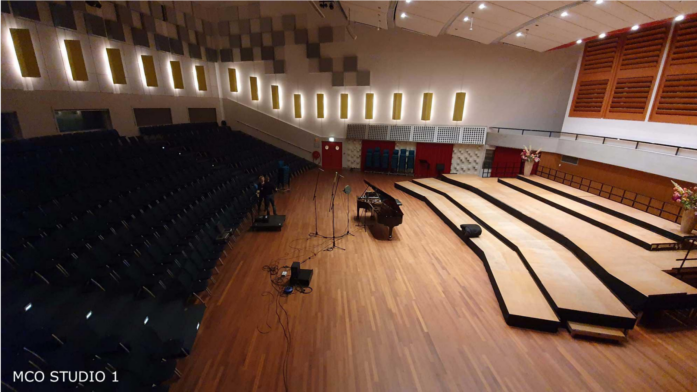
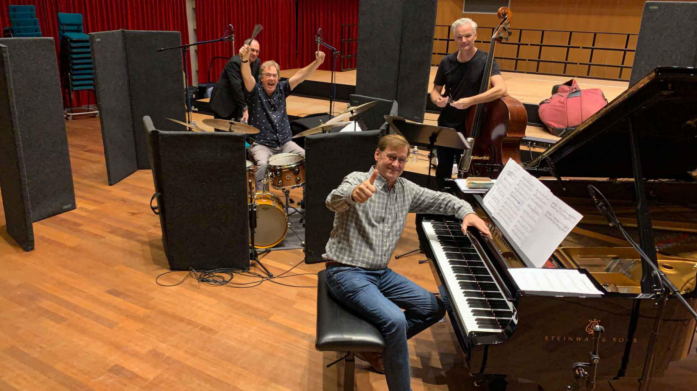





![Viriditas [Visual Video Album]](https://media.nativedsd.com/storage/nativedsd.com/wp-content/uploads/2024/03/26133644/Artboard-3-300x300.jpg)


![Singing Bells Meditation [Pure DSD]](https://media.nativedsd.com/storage/nativedsd.com/wp-content/uploads/2024/07/23221328/Artboard-scaled.jpg)

![The Art of the Fugue: J.S. Bach on Two Harpsichords [Pure DSD]](https://media.nativedsd.com/storage/nativedsd.com/wp-content/uploads/2024/08/15115842/OM07100H-300x300.jpg)




